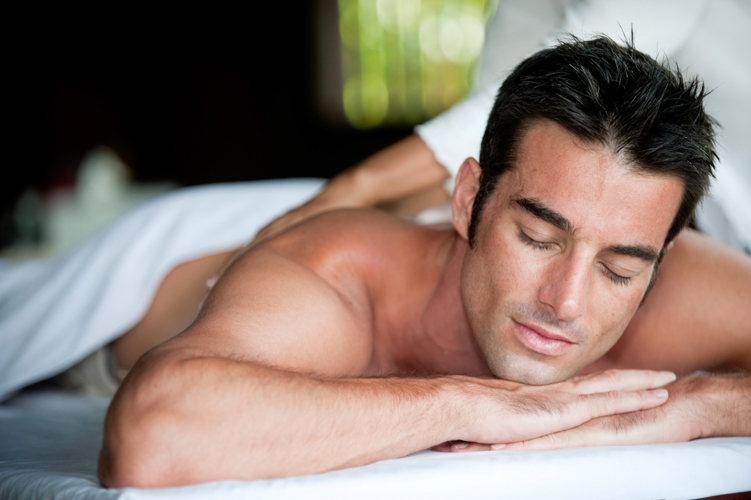Written by Alison Johnson
—
[dropcap]As a stylist, Shawn Gambill is sometimes on his feet 10-plus hours a day, often with his hands airborne. The strain can cause significant back, leg and shoulder pain; in one case, a frozen shoulder joint left him unable to lift his arm above his head.[/dropcap]Instead of continuously popping Aleve, Gambill has found another source of relief: massage. Once or twice a month, the 38-year-old Newport News resident gets a 60- or 90-minute deep tissue massage, which also eases his headaches and helps him sleep.
“The benefits are almost instant,” Gambill says. “It’s very calming, and so much better than worrying about the long-term effects of just taking pain medicines every day.”
While many people still enjoy massage for pure relaxation, the field of therapeutic massage—the prevention and treatment of health problems—is growing fast. Clients of all ages are trying it for a long list of ailments: back pain, headaches, osteoarthritis, sports injuries, fibromyalgia, whiplash, anxiety, depression and chemotherapy side effects, to name a few. With research and anecdotal evidence of benefits building, more doctors also are recommending massage as a complement or add-on to traditional medicine and physical therapy, and massage therapists increasingly are working out of medical or chiropractic offices.
“I have seen this all really take off in the last few years,” says Rebekah Lawrence, a nationally certified massage therapist and president of Balance Therapeutic Massage in Virginia Beach. “I think a lot of people are just sick of taking pills. They want another option.”
Lawrence, who also gets massages for migraine headaches, estimates 70 percent of her local clients come in for a health reason (tourists are more likely to want an indulgence). Those numbers hold up nationally: according to a 2012 survey by the American Massage Therapy Association, 75 percent of people who’d had a massage in the past year cited a medical (43 percent) or stress-related (32 percent) reason rather than pampering (11 percent). That survey also found 87 percent of people considered massage beneficial to overall health; 89 percent called it effective for pain relief.
All massage boosts the circulation of oxygen-rich blood, but there are many different types and variations within each. The term “Swedish massage” typically refers to gentler sessions—what people think of when they picture a spa getaway. “Deep tissue massage” involves deeper, sometimes temporarily uncomfortable strokes to target chronic muscle tension or knots. Sports massages, used by many professional athletes, are similar to deep tissue workups but might focus on areas specifically related to athletic performance, either to speed recovery or prevent injury. Other varieties include orthopedic (soft tissues), prenatal (pregnancy), cranial sacral (head and spine), geriatric (aging) and oncology (cancer).
With so many options, massage therapists advise people to look for certified practitioners and describe their trouble spots in detail. “I’ve had so many people tell me, ‘I’ve tried everything else and this is the only thing that makes a difference,’” notes Heath Scott, a nationally certified massage therapist and massage coordinator for the Institute of Health & Healing, a Newport News-based school that offers classes, as well as services to the public. That includes skeptics who might have had a bad or ineffective massage in the past, he adds.
Like many in his profession, Scott works with a lot of runners, people with overuse joint injuries, and neck, shoulder and back soreness from too much sitting, often at a computer. Scott, an ultra-marathon runner himself, has found relief for pain and inflammation in his legs.
Another distance runner, Renee High of Virginia Beach, also swears by deep tissue massage. The 31-year-old registered nurse, a professional racer who logs up to 100 miles a week, has a massage two or three times monthly for lower back and leg pain and stiffness. “It helps me prevent injuries so I can keep going, and it keeps me sane,” High says. “I walk out feeling better.”
At the Williamsburg Peninsula Cancer Institute, massages are a complimentary part of treatment plans and may help reduce pain, nausea, constipation, fatigue and more, says Kendall McCall, one of two—soon to be three—nationally certified massage therapists on the Integrative Medicine team at PCI. “It may also create an overall sense of well-being during the course of cancer treatment,” McCall says.
Massage isn’t risk-free, although massage therapists say the chance of a new or aggravated injury is very slim with a well-trained professional. Doctors also might not recommend massage for certain patients, including people prone to blood clots. Finally, insurance may not cover sessions, particularly outside a medical or chiropractor’s office.
Gambill, for one, doesn’t mind paying out of pocket. “It makes me feel so much better—body and mind,” he says. “Plus, I spend less at the drug store.”

